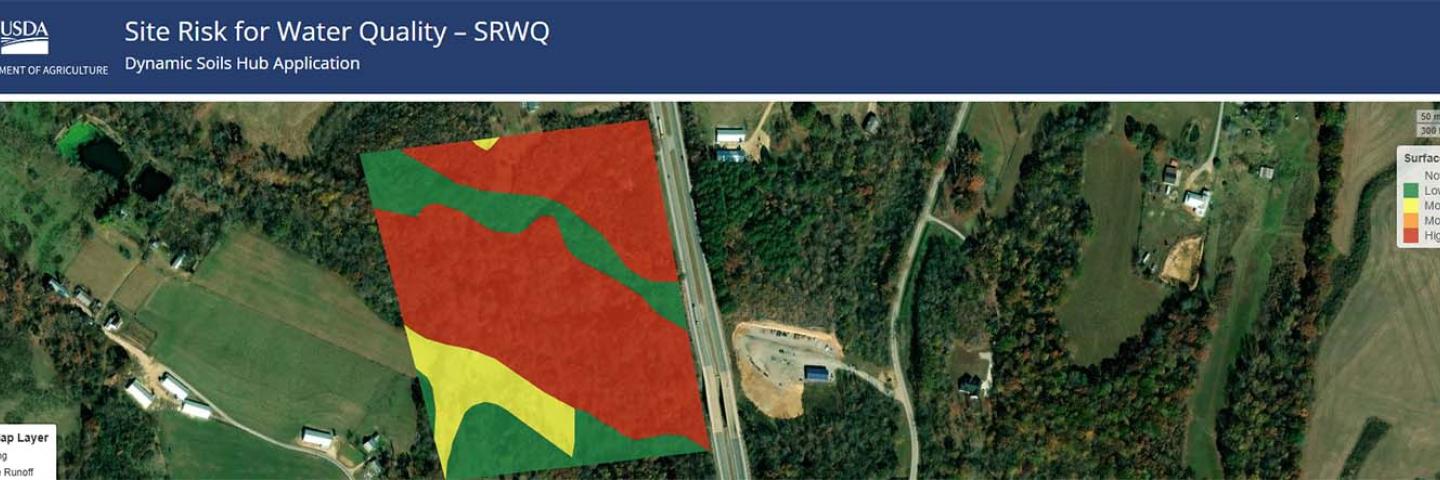New Tool for Nutrient Management Planners Available

Technical service providers and certified crop advisors can use the site risk for water quality tool to evaluate the risk for nutrient loss on farm fields.
On farms, nutrients like nitrogen and phosphorus are the building blocks for plant growth and production. Nutrient management requires a custom plan to help minimize nutrient runoff from fields into local waterways.
USDA’s Natural Resources Conservation Service (NRCS) works with producers to develop nutrient management plans that can protect water quality and save money on fertilizer.
Conservation planners use site-specific nitrogen and phosphorus planning thresholds for leaching and runoff within the Conservation Assessment Ranking Tool (CART) to help producers protect water quality. Those same planning thresholds are now publicly available in the new Geographic Information System (GIS) Site Risk for Water Quality (SRWQ) tool available on the Dynamic Soils (DS) Hub.
“There are significant differences between and within fields for nutrient loss in both leaching and runoff,” said Tim Pilkowski, NRCS national nutrient management specialist. “This new tool can help planners visualize how nutrient management can be more effectively integrated with other conservation practices to protect water quality.”
By implementing the 4R’s of nutrient stewardship—right source, right method, right rate, and right timing—NRCS can help producers reduce nutrient losses from the fields. More intense nutrient management that optimizes all 4Rs to better match crop needs can greatly reduce excess nutrients that could leach and runoff into ground and surface water.
The goal is to support 4R prescriptions that address site-specific risk for nutrient loss and then integrate nutrient management with other related practices, such as crop rotation, cover crop, residue management, and irrigation water management.
The SRWQ tool is available to all. Technical service providers (TSPs), certified crop advisors (CCAs), NRCS conservation planners, academia, and the public have access to the tool at no cost.
The tool is available here. For more information about nutrient management, contact your local NRCS field office.

